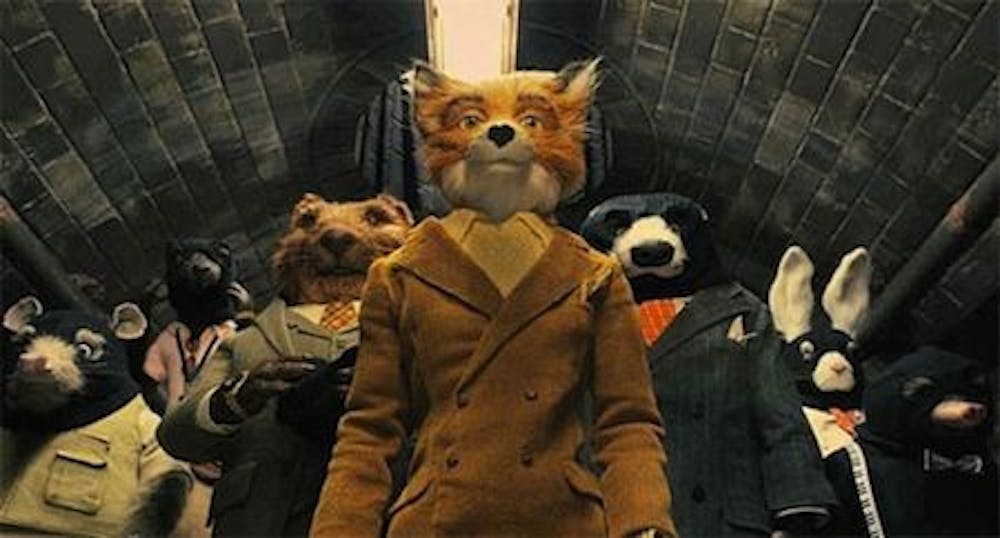Although stop-motion has been around since the early days of film, it has burst back into the spotlight over the past twenty years courtesy of The Nightmare Before Christmas, Corpse Bride, Fantastic Mr. Fox and the Wallace & Gromit series, among other modern animation classics. The endlessly demanding technique involves taking photographs of objects, from clay to puppets and beyond, moved in small increments between shots. These are then played in sequence to create the illusion of movement. Stop-motion may lack the fluidity of hand-drawn or computer animation, but the rich texture and immersive quality that it creates cannot be imitated.
YOUTUBE IS YOUR FRIEND
Lately, many stop-motion films have enjoyed lucrative runs at the nearest multiplexes. But don't limit yourself to these family-friendly money-makers. Stop-motion works are extremely diverse, so Street decided to spotlight key auteurs who may not be on your radar.
Ladislaw Starewicz
Born in 1882, Starewicz was one of the earliest successful stop-motion directors. Working in Russia during the silent era, he made films using animals or insects as characters. His most famous film, The Cameraman’s Revenge (1912) , is a cynical yet humorous tale about shared arthropod infidelity. Mr. Beetle falls in love with a dancer at the “Gay Dragonfly” nightclub (scandalous!), while Mrs. Beetle falls for a romantic artist.
Jan Svankmajer
Arguably the greatest of all stop-motion animators, Svankmajer’s work is heavily grounded in the Surrealist art movement. The details in his films are astonishing and he often walks a fine line between the humorous and the macabre. His masterpiece is a 1988 adaptation of Alice and Wonderland that combines live action with stop-motion. With its grotesque imagery (runaway animal skeletons and escaping meat, anyone?) and stunning visuals, Alice has since become a cult classic. Also, check out Dimensions of Dialogue, one of his craziest short pieces.
The Brothers Quay
The identical Quay twins studied animation at Philly’s own UArts. Their films are often sparse on dialogue and narrative and feature dolls in moody, highly stylized atmospheres. Perhaps their greatest success, Street of Crocodiles (1986) is a short existential work about a freed puppet who explores the mechanical settings around him, searching for meaning in a world of isolation and assimilation. If you like trippy, highly experimental fare, then this is definitely for you.
Adam Elliot
A 2004 Oscar for his animated short, Harvie Krumpet, catapulted Elliot to the forefront of independent stop-motion animators. He calls his work “clayographies,” as they are often based on his friends and family. Harvie Krumpet, for example, explores his hereditary condition of physiological tremors. Elliot’s first feature, Mary and Max, premiered in 2009 and earned raves at Sundance. It delicately portrays a pen-pal relationship between a lonely eight-year-old girl in Australia and a 44-year-old New Yorker suffering from Asperger’s syndrome.
DO IT YOURSELF!
You know you’ve always wanted to see your favorite childhood toys move on their own. While time consuming, stop-motion isn’t as difficult as it seems. All you need is a digital camera and basic video editing software, such as iMovie or QuickTime Pro. Simply follow these steps to see objects come to life before your eyes!
1) Take Lots and Lots of Pictures
Place your camera on a tripod. Photograph the object, then move it ever so slightly and take another picture. Do this until the object has completed the desired movement.
2) Load the images
Download all the photos into a folder and then find them in your video editing program (they should appear in order).
3) Animate
You’re essentially creating a slideshow, except each image is displayed for only a fraction of a second instead of several seconds. It’s recommended that you display about ten photos per second. In iMovie, this is three frames-per-second.
Congrats! You’ve made your first stop-motion sequences. Show us what you’ve done by uploading them on Youtube and pasting the link in the comments online.
FYI
Before the rise of CGI, stop-motion was a cheap way to execute special effects. The most famous use of stop-motion is in Merion C. Cooper’s groundbreaking King Kong (1933), where dinosaurs and the great ape himself are brought to life. Other examples include the fighting skeletons in Jason and the Argonauts (1963), the ghosts in Raiders of the Lost Ark (1981) and the AT-AT walkers in The Empire Strikes Back (1980).







